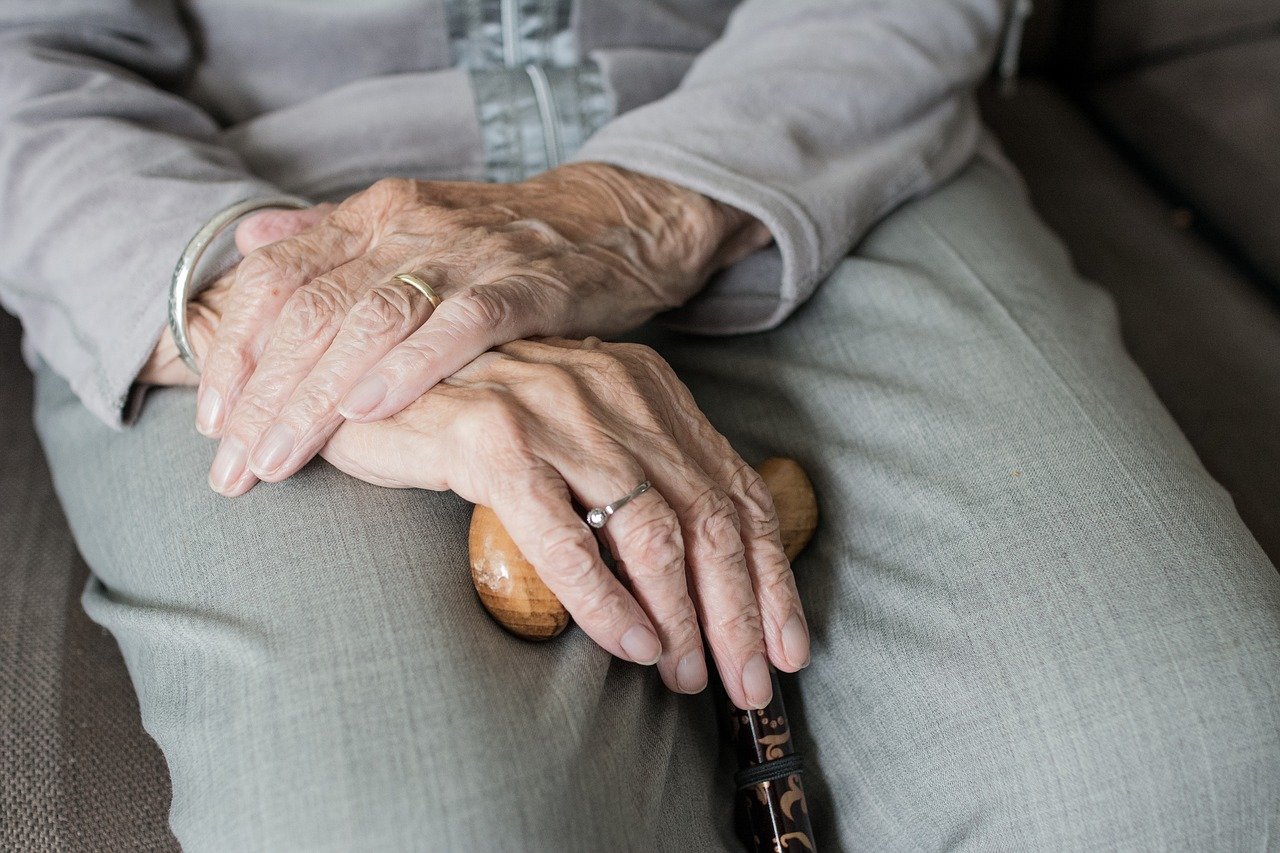
Defining Continuing Care Retirement Communities (CCRCs)
Today, seniors are searching for alternatives to age with dignity and live in housing that meets their unique needs. A range of senior housing options including continuing care retirement communities (CCRC) are now available, making it easier for seniors to find a place that feels like home.
CCRCs are an exciting new alternative for seniors who are interested in a vibrant community and a continuum of care. Let’s better define CCRCs so you understand the advantages and whether it may be the right choice for you.
About CCRCs
What is a CCRC?
The general idea of a CCRC is to provide housing for seniors in every stage of their golden years. The layout depends on the CCRC, but it’s often a campus-style or a single high-rise building. It looks like a regular retirement community with extras such as a dining area, gym, and a robust social calendar.
However, CCRCs are unique in that they provide a continuum of care. This means they have health services that are personalized to a senior’s needs and can be updated over time as needed. This includes personal care (such as laundry and housekeeping), custodial care (bathing and dressing), and even skilled nursing care.
What are the levels of care available at a CCRC?
Living in a CCRC gives you the flexibility to receive different types of care throughout your senior years. The four tiers of care that are most common at a CCRC include:
- Personal care: Laundry, housekeeping, and yardwork, plus services such as meals and recreational activities. Depending on the CCRC, it may also include transportation and community-based programs.
- Custodial care: Help with bathing, dressing, and toileting, as well as getting in/out of bed. This includes any non-medical tasks surrounding hygiene and mobility.
- Nursing care: Around-the-clock skilling nursing care as prescribed by a doctor.
- Specialized care: Includes memory care, palliative care, or hospice care as needed.
As you can see, CCRCs offer a range of care according to every senior’s needs.
What are some typical recreational activities?
CCRCs often have a social calendar with plenty of activities available, including gym classes, workshops, and happy hours, as well as amenities such as libraries and game rooms. The recreational options available will depend on the CCRC, but many are “mini cities” with popular social activities.
Other typical amenities may include:
- 24/7 security service
- 3 meals a day
- Weekly housekeeping
- Hairdresser and nail salon
- Banking and postal services
- Scheduled transportation
- Access to an on-site doctor by appointment
- Recreational outings
Who is a good candidate for a CCRC?
A CCRC is considered a life care facility. This means it’s great for seniors who are just entering their senior years and want to find a stable housing arrangement. It’s also intended for seniors who want to make the most of these years by getting rid of the burden of cooking and household chores. At the same time, it’s an opportunity to find a community and get the peace of mind of safe and secure housing – not to mention the continuum of care offered by a CCRC.
In particular, a senior is a good fit for a CCRC if they:
- are looking for the stability of a life-long home
- want help with meals and/or household chores
- are feeling lonely
- feel unsure of safety
- live with a partner with different care needs
- want the flexibility to receive care as needed
- want to receive the tax benefits of life care
What are the financial and health requirements to enter a CCRC?
Unfortunately, CCRCs aren’t open to every senior. There are age, health, and financial requirements including:
- Must be older than 62 (by law)
- Must generally be in good health, though in the future may need healthcare
- Must be able to pay an upfront down payment (usually $2,000 to $500,000), as well as paying for a suite of services that may not be accessible to all seniors
For this reason, CCRCs often house seniors who don’t yet suffer health problems and have greater financial abilities.
What are the benefits of choosing a CCRC?
There are a variety of benefits that CCRCs can offer. First and foremost, many seniors like the idea of having life-long housing and the possibility of getting healthcare as needed. This flexibility can give seniors peace of mind instead of worrying about relocating, finding other care options or having unexpected bills later in life.
CCRCs make it possible to enjoy your later years without these pressing concerns. In addition, CCRCs let seniors:
- age in place and avoid relocation
- forgo home maintenance responsibilities
- get access to a spectrum of care (including partners)
- enjoy a vibrant social life
- feel safe and secure
- get tax benefits
The CCRC is an excellent choice for seniors who can afford this suite of services.
What are the drawbacks of choosing a CCRC?
The most common drawback to a CCRC is the price tag. Often seniors have to make an upfront payment, as well as use up some lifetime assets in order to secure a CCRC. This initial financial step can make some seniors hesitate.
In addition, CCRCs really provide a sense of community, which can be a positive. However, for seniors who value their independence and don’t like the idea of being surrounded by other seniors, a CCRC might not be the right choice.
Moreover, if a senior’s illness or injury requires hospitalization, this won’t be available on-site at a CCRC. The senior will have to be transferred to a hospital, but of course may return for recovery care.
How does it compare to other housing options?
CCRCs have all the fun of a retirement community, with the possibility of more serious nursing care. For many seniors, it hits that sweet spot of giving them independence, with the option to get more help over time. Many compare it to an assisted living facility, though a CCRC has a more diverse range of care needs.
What is the living experience like in a CCRC?
Generally speaking, seniors who live in CCRCs love it. Here you’ll find a rich social calendar and a strong sense of community, the convenience of meals and amenities, and the guarantee of healthcare as you age. Many seniors even wish they had moved to a CCRC years earlier to make the most of it.
Paying for CCRCs
Do I rent or buy a CCRC home?
CCRC contracts vary greatly. Some CCRCs involve seniors buying the cottage/apartment or gaining partial ownership. Other CCRCs have a rental model, where seniors pay a certain rent to live there. You’ll have to contact the CCRC you’re interested in to learn more about whether buying, renting or both are available.
How much does a CCRC cost?
The greatest obstacle to a CCRC is often the cost. However, it’s important to contextualize the price within senior care.
Here are a few considerations regarding the cost: the size of the cottage/apartment, the level of care, and the type of amenities contract (whether all-inclusive or per-use). In addition, you may see cost differences in buying or renting the unit. Some CCRCs also charge an upfront fee at move-in, ranging from $2,000 to $500,000.
Generally speaking, a CCRC costs about $2,000 to $5,000 a month on top of the upfront fee. While that may seem expensive, nursing homes cost about $7,000-$8,000 a month on average and assisted living costs $4,000 a month on average. In context of these other types of senior living, a CCRC isn’t any more expensive. The only cost difference for a CCRC is the upfront fee that may cost seniors thousands of dollars.
Does long-term care insurance cover CCRCs?
If you have long-term care insurance, it may cover the cost of a CCRC. However, to trigger long-term care, you typically must have been diagnosed with a chronic condition. Therefore, it may only cover care at a CCRC post-diagnosis.
Does Medicare or Medicaid pay for a CCRC?
Medicare doesn’t cover personal or custodial care, though certain nursing care may be covered by your health plan. You’ll have to see if the CCRC accepts Medicare in the case of nursing care. (This wouldn’t include all other care, rent, meals or amenities.)
Medicaid covers long-term care, including custodial and nursing care for low-income and medically-needy seniors. However, care must be received at Medicaid-approved facilities. CCRCs are unlikely to be Medicaid-approved.
How else can I pay for a CCRC?
Seniors often sell their family home or use their investment portfolio to buy into a CCRC. This helps them cover the initial upfront fee. Other than personal finances, there are currently no senior or health programs that cover CCRC housing.
Finding a CCRC
What should I look for in a CCRC?
CCRCs fall on a diverse spectrum. To find the right CCRC for you, you’ll want to research CCRCs near you and then stop by for a visit. During the visit you can:
- Tour the housing and care levels
- Talk to residents and check out the social calendar
- Speak with a financial manager about the costs and annual price increases
By seeing the CCRC for yourself, you’ll get a better idea of whether it’s a good fit for you.
How can I find the right CCRC for me?
Start your search on My Caring Plan. Here you’ll find resources on all types of senior housing, including CCRCs. You can even get recommendations for CCRCs near you. It’s a good starting point for finding a place that feels like home.
Sources:
- AARP, CCRCs, www.aarp.org
- Mass.gov, CCRCs, www.mass.gov
Related Articles

Elder Law Attorneys: A Comprehensive Guide
If you are someone who is taking care of a senior or has an elderly loved one, you should consider working with an elder law attorney. Though you may not expect it, individuals begin to face new and more complex legal concerns as they get older. Actions that may have seemed trivial when they were […]

When Is It Time for Assisted Living?
Wondering if it is time for assisted living for your loved one is a common question for caregivers. As a caregiver, you might have been considering the question for months or possibly even years. Your loved one might have declined to continue the discussion as the thought of moving out of their family home and […]

All About Adult Day Care: Community and Costs
Adult day care is a fairly new concept for caregivers. The basic idea is to provide a secure place where seniors can enjoy social activities during the day and be provided nursing care as needed. It’s a hybrid model of eldercare that prioritizes community. At the same time, seniors get help with common custodial tasks […]

Respite Care: An Overview
Caregiving can be overwhelming at times. That’s why taking a break is essential for recharging your battery. Respite care, also called short break care, is a way for caregivers to get temporary care for their loved ones so they can take some time to rest. Getting this “me time” of respite care can renew the […]

An Overview of Senior Rehabilitation Centers
Recovering from injury or illness in your golden years may take time and support. That’s where senior rehabilitation centers become essential. If you need a temporary stay to recover from injury or illness, senior rehabilitation centers can be the solution to get expert care and daily support. In this article, we’ll give you an overview […]

A Caregiver’s Guide to ADLs and IADLs
This article has been medically reviewed by Dr. Martin Duggan in 2021. This content is not intended to be a substitute for professional medical advice, diagnosis, or treatment. Always seek the advice of your physician or another qualified health provider with any questions you may have regarding a medical condition. As a family caregiver, your […]